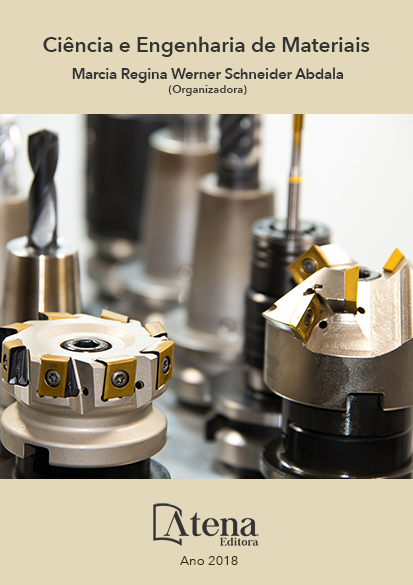
AVALIAÇÃO DA ADIÇÃO DO PÓ DE RESÍDUO DE MANGANÊS EM MATRIZ CERÂMICA PARA REVESTIMENTO
A utilização de materiais reciclados
na composição de novos produtos segue a
tendência mundial de produção atendendo
às novas exigências tecnológicas e as
preocupações ambientais. Este trabalho
tem como objetivo utilizar o resíduo do pó de
manganês na massa cerâmica para a fabricação
de revestimento cerâmicos. As matériasprimas foram caracterizadas por fluorescência
de raios-X e difração de raios-X. O resíduo
em pó adicionado à argila em percentagens
de 0%, 5%, 10% e 15% em peso, foram
compactados por prensagem uniaxial de 30
MPa e sinterizadas nas temperaturas de 900°C,
1000°C e 1100°C. As amostras foram avaliadas
quanto resistência à flexão, massa específica
aparente, absorção de água e retração linear.
A variação microestrutural foi analisada por
difração de raios-X e microscopia eletrônica
de varredura. Os resultados mostraram
viabilidade para a produção de cerâmica de
revestimento porcelanato (formulações A3 e
A4) e grês (formulação A2), de acordo com as
especificações das normas técnicas
AVALIAÇÃO DA ADIÇÃO DO PÓ DE RESÍDUO DE MANGANÊS EM MATRIZ CERÂMICA PARA REVESTIMENTO
-
DOI: Atena
-
Palavras-chave: cerâmica, argila, resíduo de manganês
-
Keywords: ceramic, clay, manganese residue.
-
Abstract:
The use of recycled materials in
the composition of new products follows the
production’s worldwide trending, meeting new
technological requirements and environmental
concerns. This work aims to utilize the residue of
manganese dust on ceramic mass for production
of ceramic coating. The raw materials were characterized by both x-ray fluorescence
and diffraction. The powder residue added to clay in the percentage of 0%, 5%, 10%
and 15% (measured in weight) was compressed by a uniaxial pressing of 30MPa and
the sintering temperatures were 900°, 1000° and 1100°. The samples were analysed
in relation to flexural strength, bulk density, water absorption and linear shrinkage. The
microstructural variation was also analysed by x-ray diffraction and electron microscopy.
The results showed that there is a viability the production of porcelain ceramic coating
(A3 and A4 formulations) and stoneware (A2 formulation) according to the specification
of technical standards.
-
Número de páginas: 15
- Ana Claudia Rangel da Conceição
- Helen Fernandes de Sousa
- Olímpio Baldoino da Costa Vargens Neto
- ANA CLAUDIA RANGEL DA CONCEIÇÃO


